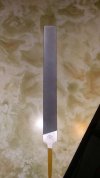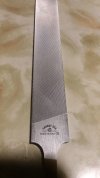- Joined
- Mar 31, 2018
- Messages
- 1,875
Hello all! I've filed and honed over a hundred axes and hatchets to date. So I've got a good handle on what a proper temper feels like under my file. In that time I've come across butter soft ones and really hard ones as well. But there are 2 that stand out as stupid hard. I'm wondering if they are mistakes? They must be brittle right?
My hrc72 Grobet file, while making steady and fairly easy progress on a good temper, struggles to file these. It will do it but just barely. So that must mean then that these axes are close to hrc70! 68-70 something like that I think.
One of them is a C. Hammond carpenters hatchet with an inlaid bit;
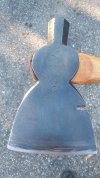
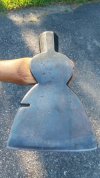
And the other is that Americanax side axe I got yesterday. I believe it's mono steel but I'm not a hundred percent on that.
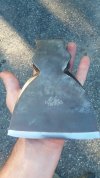
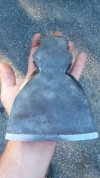
On both the oxidation layer was by far the easiest part. It went downhill from there quick!
Do any of you have any that are the same? Just beyond ridiculously hard! And what do you think, mistakes in tempering?
My hrc72 Grobet file, while making steady and fairly easy progress on a good temper, struggles to file these. It will do it but just barely. So that must mean then that these axes are close to hrc70! 68-70 something like that I think.
One of them is a C. Hammond carpenters hatchet with an inlaid bit;


And the other is that Americanax side axe I got yesterday. I believe it's mono steel but I'm not a hundred percent on that.


On both the oxidation layer was by far the easiest part. It went downhill from there quick!
Do any of you have any that are the same? Just beyond ridiculously hard! And what do you think, mistakes in tempering?

